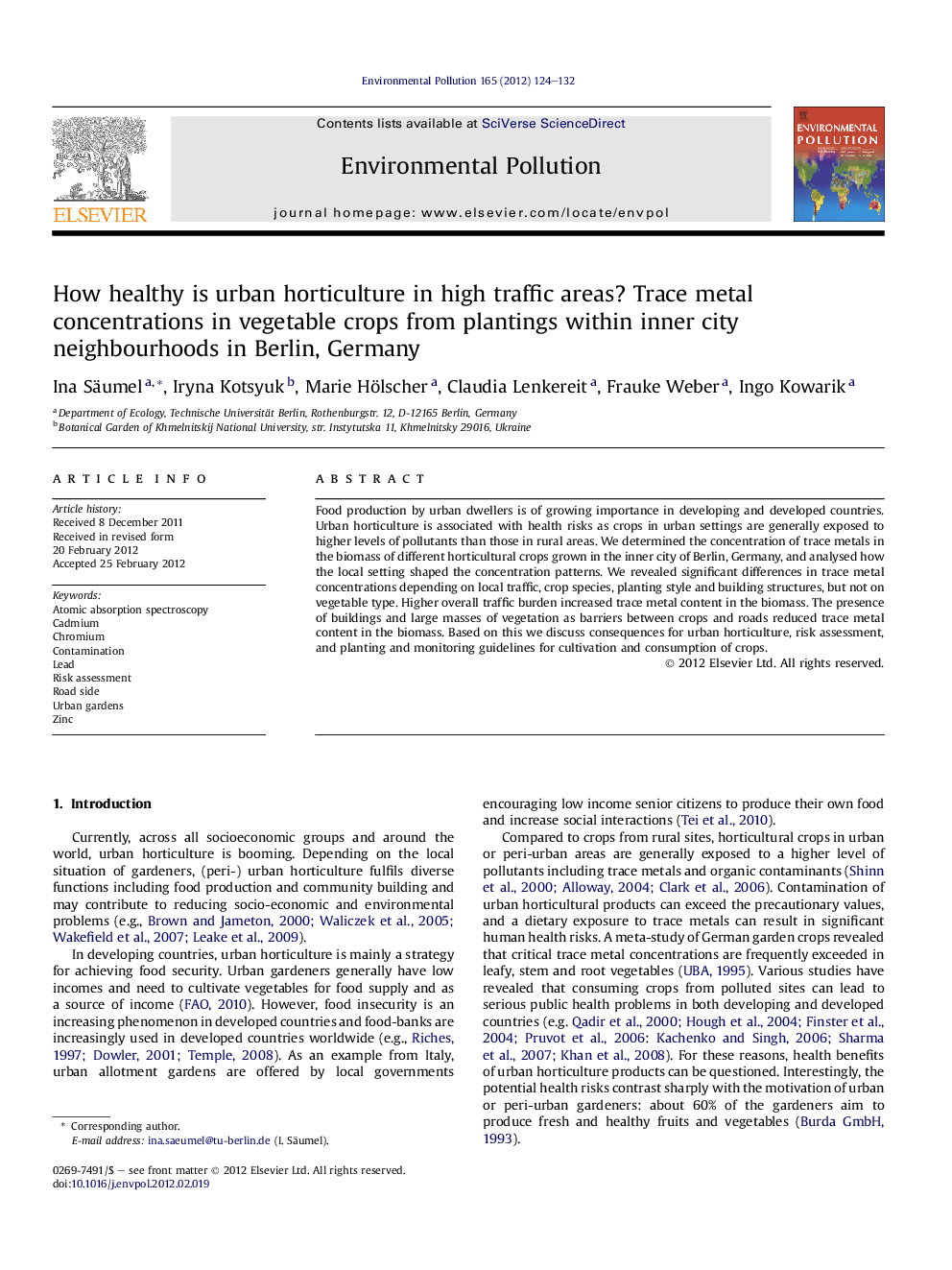| Article ID | Journal | Published Year | Pages | File Type |
|---|---|---|---|---|
| 4424872 | Environmental Pollution | 2012 | 9 Pages |
Food production by urban dwellers is of growing importance in developing and developed countries. Urban horticulture is associated with health risks as crops in urban settings are generally exposed to higher levels of pollutants than those in rural areas. We determined the concentration of trace metals in the biomass of different horticultural crops grown in the inner city of Berlin, Germany, and analysed how the local setting shaped the concentration patterns. We revealed significant differences in trace metal concentrations depending on local traffic, crop species, planting style and building structures, but not on vegetable type. Higher overall traffic burden increased trace metal content in the biomass. The presence of buildings and large masses of vegetation as barriers between crops and roads reduced trace metal content in the biomass. Based on this we discuss consequences for urban horticulture, risk assessment, and planting and monitoring guidelines for cultivation and consumption of crops.
► Traffic-related pollutant deposition as important pathway for crop contamination. ► Heavy metal content often over EU standards for lead concentration in food crops. ► ‘Grow your own’ food in inner cities not always ‘healthier’ than supermarket products. ► No support for generalisations of crops as ‘risky high’ or ‘safe low’ accumulators.
